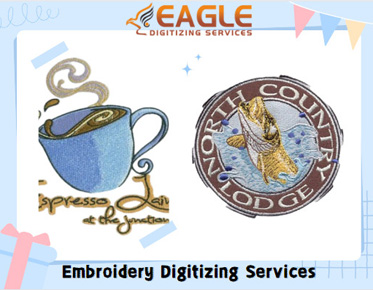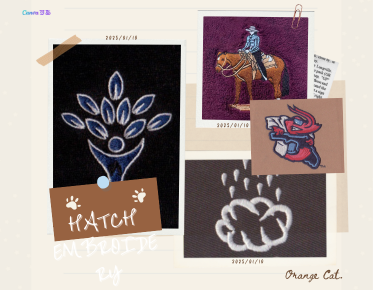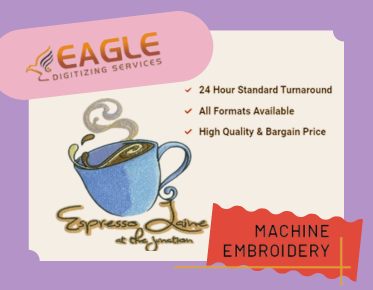How to Digitize Monogram Designs
Digitizing monogram designs is an essential skill for anyone involved in embroidery, whether for personal projects or professional services. The process involves converting a monogram, which is typically a combination of initials, into a digital format that can be read by embroidery machines. This guide will walk you through the steps of digitizing monogram designs, highlight the necessary tools, and provide tips for achieving the best results.
Understanding the Basics of Monogram Digitization
Before diving into the digitization process, it's important to understand what monogram digitization entails. Essentially, it involves using specialized software to convert a monogram design into a stitch file. This file is then used by embroidery machines to create the design on fabric. The key to successful digitization is ensuring that the design is clear and that the stitches are appropriately placed to maintain the integrity of the monogram.
Tools Required for Monogram Digitization
To digitize monogram designs, you will need a few essential tools:
- Embroidery Digitizing Software: This software is crucial as it allows you to create and edit stitch files. Popular options include Wilcom, Hatch, and Pulse. These programs offer a range of features that facilitate the digitization process.
- Computer: A reliable computer with sufficient processing power is necessary to run the digitizing software smoothly.
- Embroidery Machine: Once the design is digitized, you'll need an embroidery machine to bring the design to life on fabric.
Steps to Digitize Monogram Designs
Step 1: Create or Import the Monogram Design
Start by creating your monogram design using graphic design software or by importing an existing design into your digitizing software. Ensure that the design is clear and that the lines are well-defined.
Step 2: Set Up the Design in the Digitizing Software
Open your digitizing software and import the monogram design. Set the parameters such as the size of the design, the type of fabric it will be embroidered on, and the stitch type. These settings are crucial as they affect the final outcome of the embroidery.
Step 3: Digitize the Design
Using the tools available in your software, trace the monogram design to create a stitch file. Pay attention to the stitch direction, density, and type. These factors will influence the texture and appearance of the final embroidery. For intricate designs, consider using a combination of different stitch types to achieve the desired effect.
Step 4: Test the Design
Before finalizing the design, it's important to test it. Run a sample on a similar fabric to check for any issues such as thread breakage or incorrect stitch placement. Make necessary adjustments in the software to correct any problems.
Step 5: Finalize and Export the Design
Once you are satisfied with the test results, finalize the design and export it in the appropriate file format for your embroidery machine. Common formats include DST, PES, and EXP.
Tips for Successful Monogram Digitization
Here are some tips to ensure successful monogram digitization:
- Choose the Right Font: The font you choose can significantly impact the readability and aesthetic of the monogram. Opt for fonts that are clear and not overly intricate.
- Consider the Fabric: Different fabrics require different stitch densities and types. Adjust your design settings based on the fabric you plan to use.
- Use Quality Software: Investing in high-quality digitizing software can make a significant difference in the ease and quality of your digitization process.
Leveraging Professional Services
If you're new to digitizing or need assistance with complex designs, consider using professional embroidery digitizing services. Companies like Eagle Digitizing offer expert services that ensure high-quality results. They provide quick turnaround times and can handle a variety of designs, from simple monograms to intricate logos.
Future of Monogram Digitization
As technology advances, the process of digitizing monograms is becoming more accessible and efficient. With the development of more intuitive software and sophisticated embroidery machines, the possibilities for creativity in monogram design are expanding. Whether you're a hobbyist or a professional, staying updated with the latest tools and techniques will allow you to create stunning monogram designs that stand out.
For those interested in exploring more about embroidery digitization, consider checking out resources like Digitizing Made Easy for software recommendations and tutorials. Additionally, platforms like Printful offer services that can complement your digitizing efforts by providing custom embroidery solutions.
As you delve into the world of monogram digitization, remember that practice and experimentation are key. Each design presents unique challenges and opportunities for creativity. Embrace the learning process, and you'll soon be creating beautiful monograms with ease.



